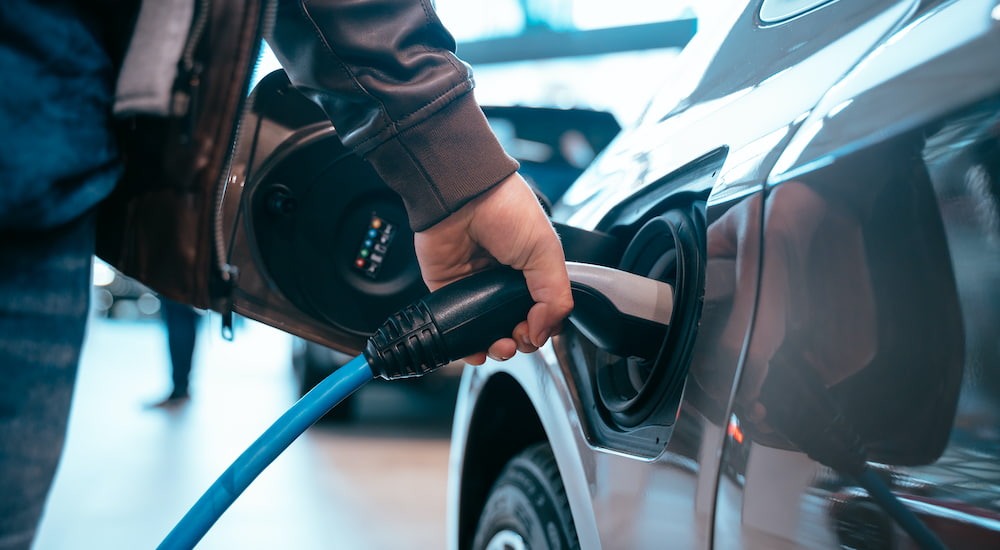When the original Tesla Roadster first hit the market back in 2008, it forever shattered the idea that electric vehicles are nothing more than boring cars for people who care more about the environment than the joy of driving. These days, high-performance EVs are growing in number, and even traditional sports car manufacturers are entering the segment with high-performance models like the recent Porsche Taycan. The most recent manufacturer to make the leap from gasoline to electricity is the legendary Italian company Pininfarina, and they are aiming for the first electric hypercar with the new Pininfarina Battista EV.
If you aren’t a hardcore supercar enthusiast, you can be excused for not having heard of Pininfarina before. Despite having a history that dates back nearly a century, Pininfarina has never actually sold a production car. So how can we use the word legendary to describe the company? Because Pininfarina has been responsible for designing some of the most iconic vehicles for high-end brands such as Alfa Romeo, Maserati, and Ferrari. Some of its more recent designs include the Ferrari F12berlinetta and the Maserati GranTurismo. Now, Pininfarina is charting a new course by building its first car, and it is not starting small.
The Battista
Named for the founder of Pininfarina, the Battista is claimed to be the most powerful Italian sports car ever. And with 1,900 horsepower (technically pferdestarke, the European equivalent, but it’s close enough) on tap, that is not an idle boast. Currently, the most powerful car in the world is the gasoline-powered Bugatti Chiron Pur Sport, but its incredible quad-turbo sixteen-cylinder engine is “only” capable of churning out 1,500 horsepower. The current king of electric sports cars, the Porsche Taycan Turbo S, is even further behind with just 750 horsepower. In short, the Battista is groundbreaking, not only for EVs but for performance cars as a whole.
As expected of a design house, Pininfarina also paid close attention to the look of the Battista. While there are a few subtle nods to its electric powertrain (mainly the lack of large air scoops), even the average enthusiast would likely assume that they are looking at the latest gasoline-powered mid-engine sports car from an expensive European brand. Ironically, by focusing on raw performance with a healthy dose of luxury, this low-slung two-seater looks more like the future than the heavily stylized electric vehicles from other traditional manufacturers. Perhaps because the Battista is the first production car from Pininfarina, they didn’t try to go overboard, making it look different from gasoline cars, and the result hits all the right notes.

The Anatomy of a Hypercar
However, digging under the skin of the Battista raises the question of whether this fabulous vehicle really deserves the title of hypercar. The Battista is undoubtedly going to be one of the most capable sports cars on the roads when it hits the market, and it will likely end up being one of the first real classics from the early era of electric cars. However, EVs are different, and 1,900 horsepower doesn’t produce the results that you might be expecting based on what you know of gasoline cars.
First, the full numbers. The Battista is powered by four electric motors, one connected directly to each wheel, producing a grand total of 1,900 horsepower and 1,695 pound-feet of torque. The end result is the fantastic acceleration expected of an EV, with a zero to sixty time of under 2 seconds. (As an aside, that is in the same ballpark as the Tesla Model S Plaid, which is projected to have around 1,000 pound-feet of torque – at these ridiculous numbers, going faster will likely require a major breakthrough in tire technology). However, looking beyond that mind-bending acceleration figure, the numbers begin to fall apart.
The big disappointment is the top speed. While gasoline cars like the SSC Tuatara and the Bugatti Chiron Super Sport 300+ are able to hit speeds of well over 300 mph, the Battista tops out at 217 mph. And this isn’t some odd quirk of the Pininfarina either – comparing apples to apples, the electric Porsche Taycan Turbo S is limited to 162 mph, while the gasoline Porsche 911 Turbo S can hit 205 mph. Why are these EVs so much slower despite having more horsepower? Transmissions.
Motors and Gearing
Beyond the neverending debate about manual vs automatic vs dual-clutch, transmission specifications don’t commonly show up in reviews and spec sheets. However, the ability to shift between different gear ratios is critical to allow a car to hit high speeds. As anyone who has ever driven a manual (or an automatic with a manual mode) knows, if you stay in first gear, you aren’t going to be going very fast. However, that is exactly what most EVs do. However, because electric motors have extremely flat torque curves and extremely high redlines (over 18,000 rpm for some Tesla models), they don’t actually need a transmission to provide usable power at anything close to road-legal speeds.
The vast majority of EVs have simple single-speed reduction gearing rather than a transmission with multiple gear ratios. One of the few exceptions is the Porsche Taycan, but even its two-speed automatic has more to do with efficiency than top speed (one may wonder just how bad its range would be without out). Adding a transmission to an EV also has drawbacks. Not only does it increase the complexity of the drivetrain and prevent the car from having an independent motor for each wheel the way the Battista does, it also increases the weight. And weight is the second major difference between EV and gasoline car performance.
Batteries Are Heavy
As most sports car enthusiasts know, when it comes to performance, weight is the enemy. Manufacturers and drivers will spend thousands of dollars to shave off ounces of excess weight, but adding a massive lithium-ion battery pack piles on the pounds. Weighing in at roughly two and a half tons (4,850 pounds before you add the driver, passenger, and whatever luggage they can squeeze into its compact body), the Battista is roughly a quarter ton heavier than the hulking Bugatti Chiron with its massive engine. In fact, it is more than twice the weight of the most popular two-seat sports car on the market, the Mazda MX-5 Miata.
While the incredible amount of horsepower in the Italian hypercar means you won’t notice that bulk when you stomp on the accelerator, we suspect that it will quickly become apparent if you decide to take it on the track or challenge a winding mountain road. While we are sure that Pininfarina will work its magic to make the Battista handle like a much lighter car, the sheer weight of current batteries will be a difficult challenge to overcome for all EV performance cars and has left the Car Life Nation wondering whether the traditional lightweight sports car will forever be the domain of gasoline engines.
The Battista Opens the Door to a New Age of Performance
While the new Pininfarina Battista may not be the peerless hypercar portrayed in the companies advertising, it is inarguably a major step forward in the development of performance EVs. While it was not the very first high-end performance EV, the Battista marks the dawn of a new age of electric supercars that will stand side by side with their world-beating gasoline-powered counterparts. All that remains to be seen is how the first production car from this legendary Italian design house will stack up against coming rivals like the Rimac C_Two, the Lotus Evija, and the new Tesla Roadster.





